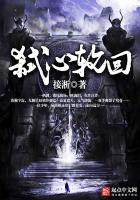"After this victory many of the nobles joined themselves to Echama Naique.So much so,that in a short time he had with him fifty thousand fighting men in his camp;while Jaga Raya,with only fifteen thousand,fled to the jungles.Here,however,he was joined by more people,so that the war has continued these two years,[364]fortune favouring now one side now the other.But the party of the young prince has always been gaining strength;the more so because,although the great Naique of Madura[365]--a page of the betel to the King of Bisnaga,who pays a revenue every year of,some say,600,000pagodas,and has under him many kings and nobles as vassals,such as he of Travancor --took the side of Jaga Raya,and sustained him against the Naique of Tanjaor.Yet the latter,though not so powerful,is,with the aid of the young King,gradually getting the upper hand.Indeed there are now assembled in the field in the large open plains of Trinchenepali[366]not only the hundred thousand men that each party has,but as many as a million of soldiers.
"Taking advantage of these civil wars,the city of San Thome[367]--which up to now belonged to the King of Bisnaga,paying him revenues and customs which he used to make over to certain chiefs,by whom the Portuguese were often greatly troubled determined to liberate itself,and become in everything and for everything the property of the King of Portugal.To this end she begged the Viceroy to send and take possession of her in the name of his Majesty,which he did,as I shall afterwards tell you.Meanwhile the captain who governed the town,by name Manuel de Frias,seeing that there was close to the town a fortress that commanded it,determined to seize it by force,seeing that its captain declined to surrender it.So he laid siege to it,surrounding it so closely that no one could get out."In the end the Portuguese were successful.The fortress was taken,its garrison of 1500men capitulated,and a fleet came round by sea to complete the conquest.
The foregoing story relates to events never before,I think,made known to English readers,and so far is of the highest interest.Let us,for the moment,grant its accuracy,and read it by the light of the genealogical table already given.[368]
King Venkata I.(1586--1614)had a sister who was married to a chief whom Barradas calls "Obo"(perhaps Obala)Raya.So far as we know,his only nephews were Tirumala II.and Ranga III.,sons of his brother,Rama III.Since Tirumala II.appears to have had no sons,and Ranga III.had a son,Rama IV,who is asserted in the inions to have been "one of several brothers,"it is natural to suppose that the nephew mentioned by Barradas,who was raised to be king on the death of the old King Venkata I.in 1614,and who had three sons,was Ranga III.,called "Chikka Raya"or "Crown-prince"in the text.He,then,succeeded in 1614,but was afterwards deposed,imprisoned,and compelled to take his own life.His eldest son at the same time followed his example,and his youngest son was slain by his father.The "middle son"escaped,and was raised to the throne by a friendly chief named Echama Naik.This second son was probably Ranga IV.Two of King Venkata's wives were Bayama,daughter of Jaga Raya,and a lady unnamed,sister of Narpa Raya.A niece of Venkata I.had been given in marriage to a Brahman boy,who had been surreptitiously introduced into the palace by Bayama and educated in the pretence that he was son of King Venkata.The plot to raise him to the throne was temporarily successful,and Ranga III.and all the royal family were killed,saving only Ranga IV.,who afterwards came to the throne.
How much of the story told is true we cannot as yet decide;but it is extremely improbable that the whole is a pure invention,and we may for the present accept it,fixing the date of these occurrences as certainly between the years 1614and 1616A.D.--the date of Barradas's letter being December 12in the latter year.
It will be observed that the inions upon which the genealogical table given above,from the EPIGRAPHIA INDICA,is founded do not yield any date between A.D.1614and 1634,when Pedda Venkata II.is named as king.In 1883I published[369]a list of Vijayanagar names derived from reports of inions which had then reached me.I am by no means certain of their accuracy,and it is clear that they must all be hereafter carefully examined.But so far as it goes the list runs thus:--A.D.
Ranga1619
Rama1620,1622
Ranga1623
Venkata1623
Rama1629
Venkata1636
The last-mentioned name and date are apparently correct.
In 1633the Portuguese,encouraged by the Vijayanagar king,still at Chandragiri,attempted to eject the Dutch from "Paleacate,"or Pulicat.An arrangement was made by which the Portuguese were to attack by sea and the Rajah by land;but while the Viceroy sent his twelve ships as agreed on,the Rajah failed to attack,alleging in explanation that he was compelled to use his army to put down internal disturbances in the kingdom.A second expedition met with no better success,the plans of the Portuguese being again upset by the non fulfilment of the king's part of the bargain.On the departure of the fleet the king did attack the Dutch settlement,but was bought off by a large payment,and the Hollanders remained subsequently undisturbed.
Senhor Lopes tells me that he has found in the National Archives in the Torre do Tombo,amongst the "Livros das Moncoes,"a number of papers bearing on this subject.The most interesting are those contained in Volume xxxiv.(fol.91--99).These were written by the Captain-General of Meliapor (St.Thome),by Padre Pero Mexia of the Company of Jesus,and by the Bishop;and amongst the other documents are to be seen translations of two palm-leaf letters written by the king of Vijayanagar,then at Vellore.It appears from these that the king was devoid of energy,and that one Timma Raya had revolted against him.















